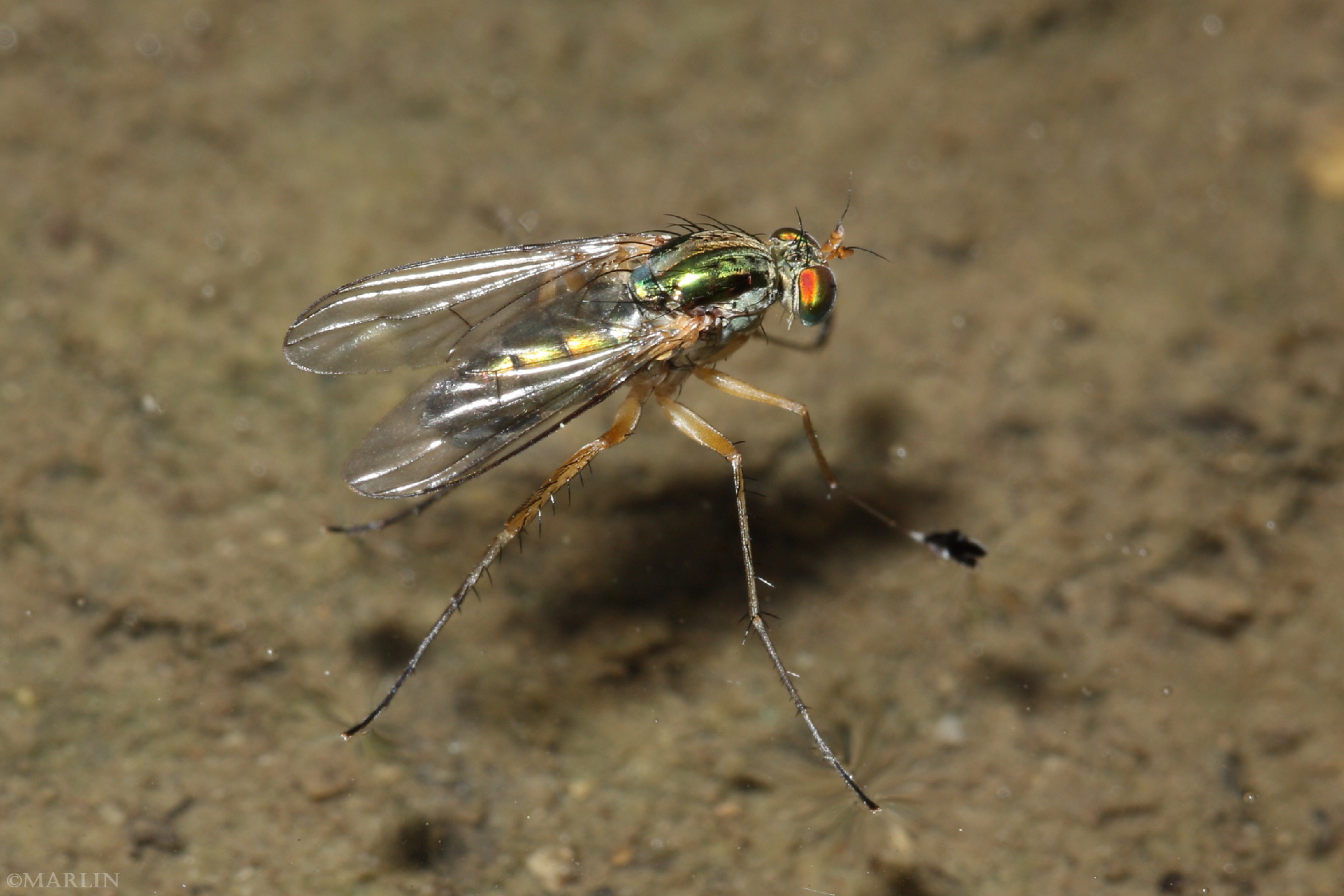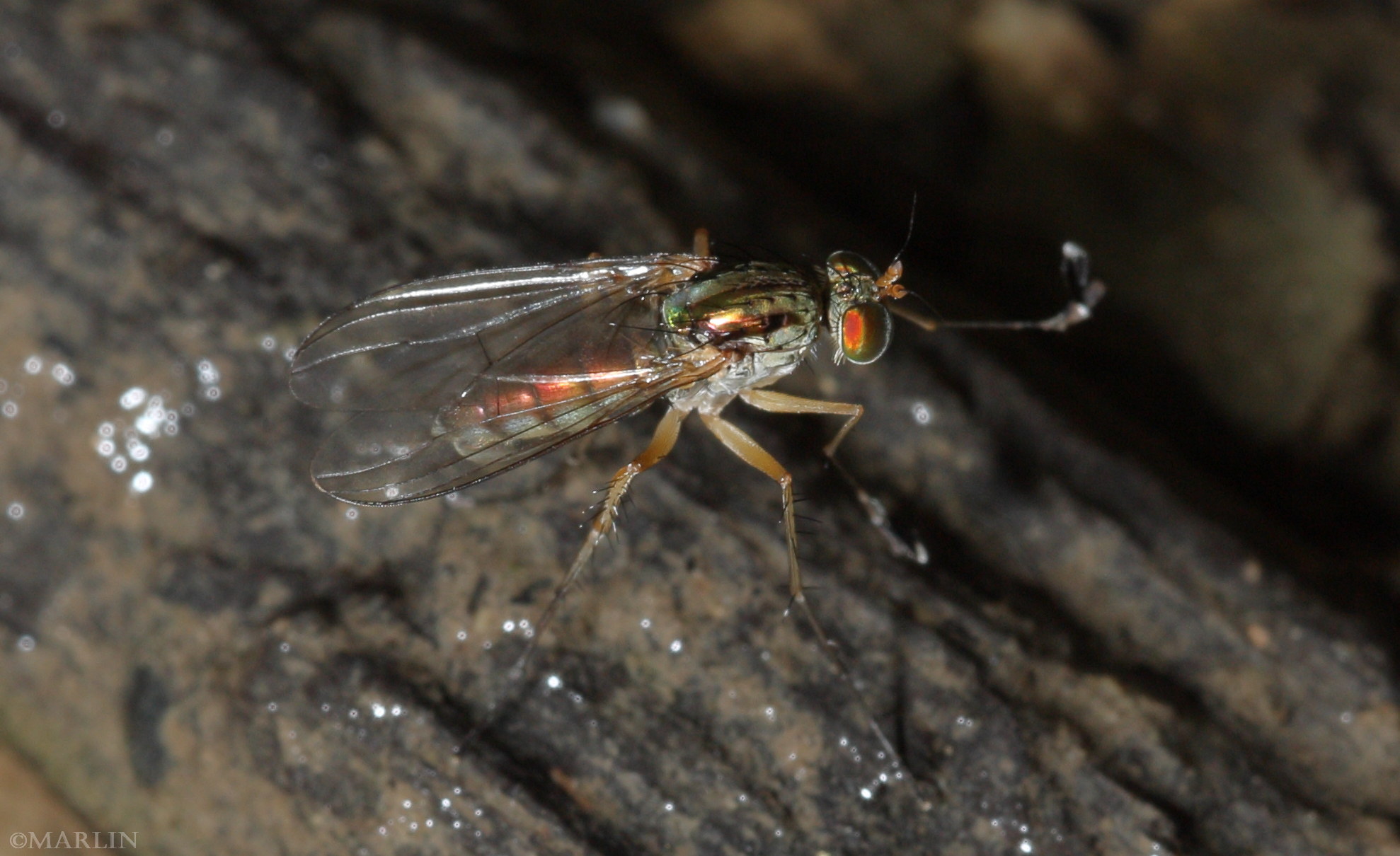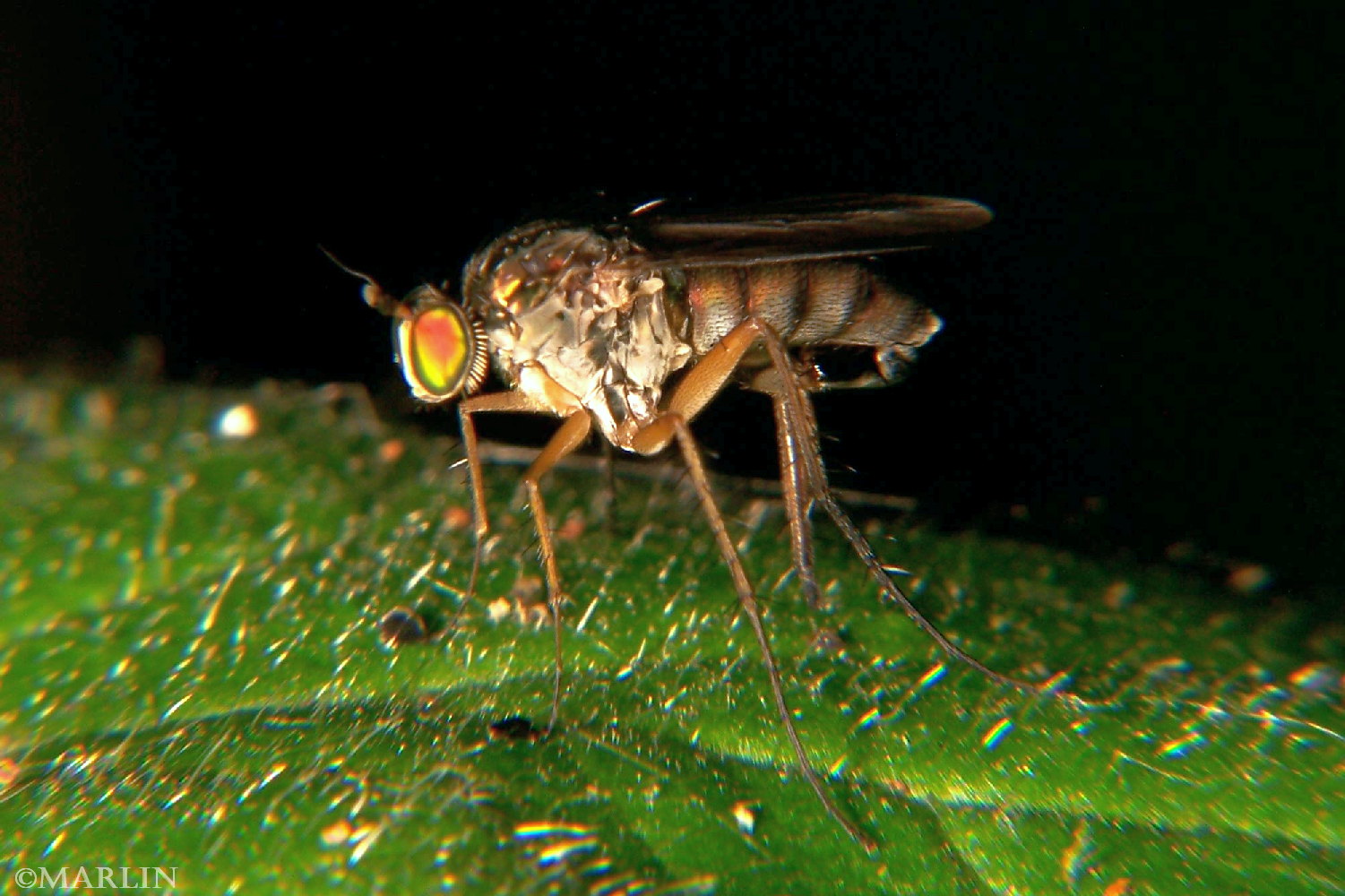Long-Legged Fly – Dolichopus species
Family Dolichopodidae – Long-legged flies
Live adult flies photographed at Winfield, Illinois. Size: 5-9mm
“Adult dolichopodids range in size from about 1-9 mm in length and can be recognized by their elongate legs, reduced wing venation, aristate antennae, and relatively slender build. Most species are metallic greenish-blue to greenish-bronze, while some others are non-metallic yellowish, or brown to black.
Males are known for their wide array of secondary sexual characteristics which have been invaluable features for recognizing species. Male secondary sexual characteristics often include modifications of the antennae, palps, wings and, typically, the legs. Larvae are whitish, cylindrical and relatively slender with distinct creeping welts on segments 4 to 11.
Adult long legged flies are predaceous, feeding primarily on small, soft-bodied arthropods and annelids, and are important natural enemies of pests in a variety of habitats including agroecosystems. Adult and larval forms of Diptera are their most favored prey, especially Chironomidae and Culicidae, followed by Homoptera, Collembola, mites and Thysanoptera. Other documented prey items include annelids, cladocerans, amphipods, small myriapods, odonate eggs, termites, psocopterans, beetle larvae, early instar caterpillars, dead and wounded arthropods and amphibian embryos.
Although the adults of some dolichopodids are known to use their forelegs to hold and manipulate their prey, most grab and masticate prey with their epipharynx and labellum, suck up the liquids and discard the remains. In addition to feeding on live prey, many dolichopodids have also been observed taking up honeydew, and it is thought that most species do so in order to obtain carbohydrates. Adults of some Dolichopodinae have elongate mouthparts and are known to be anthophilous and feed on nectar.” —North American Dipterist Society, Empidoid Resources
Male long legged flies have enlarged tarsi on their front legs, used in courtship displays like the fly pictured above is engaged in. They frantically wave their front feet during face-to-face encounters with females. It’s really quite a sight.
These flies are most often photographed on plant foliage, but where they are really at home is on the surface of puddles. They walk on water and are much faster even than the bugs called water striders. The male below is standing on the water’s surface.
“Like a long-legged fly upon the stream
His mind moves upon silence.”
– William Butler Yeats
Insects & Spiders | Flies Index | Tachinidae | Dung Flies | Bee Flies | Robber Flies
Tree Encyclopedia / North American Insects & Spiders is dedicated to providing family-friendly educational
resources for our friends around the world through large images and macro photographs of flora and fauna.




